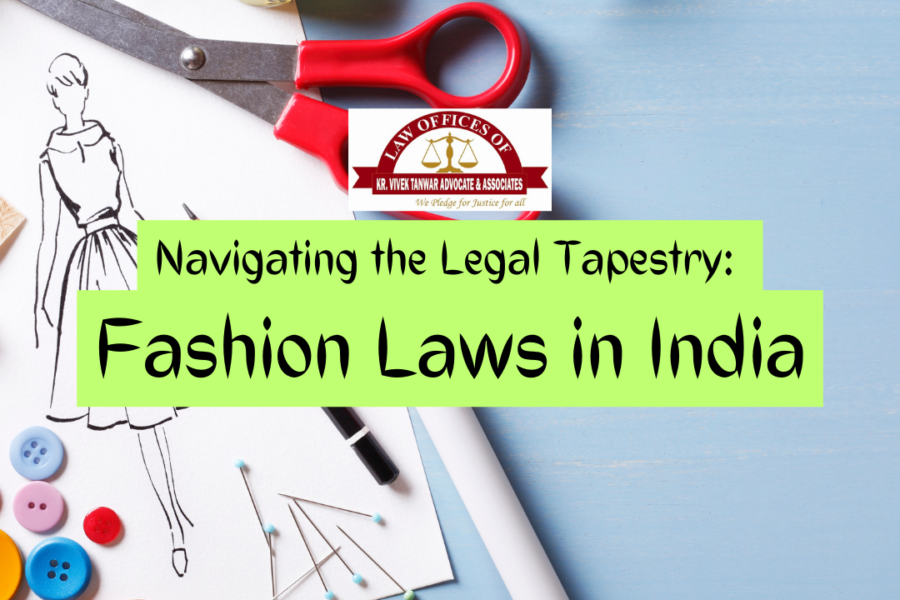Abstract:
The Indian fashion industry is a tapestry woven with creativity, innovation, and commerce. However, behind the glitz and glamour lies a complex legal framework that governs various aspects of this dynamic sector. From intellectual property rights to consumer protection, labor standards, and environmental regulations, understanding the legal landscape is paramount for stakeholders in the fashion industry. This article provides a comprehensive overview of fashion laws in India, examining key legislation, relevant sections, and notable case law to offer insights into the legal intricacies shaping the Indian fashion landscape.
Introduction:
The Indian fashion industry is a vibrant ecosystem that encompasses designers, manufacturers, retailers, and consumers. It is a melting pot of tradition and modernity, where cultural heritage meets contemporary trends. However, amid the creative fervor, legal considerations play a pivotal role in safeguarding the interests of stakeholders and ensuring ethical practices.
I. Intellectual Property Rights (IPR) in Fashion:
A. Copyright Protection:
- The Indian Copyright Act, 1957:
- Section 13: Originality of artistic works
- Section 14: Categories of copyrighted works
- Section 15: Ownership of copyright
- Case Law Analysis:
- R.G. Anand v. Deluxe Films (1978): Established the principle of originality in copyright law, emphasizing the protection of artistic expressions in fashion.
- Eastern Book Company v. D.B. Modak (2008): Defined the scope of copyright protection for literary and artistic works, setting precedents relevant to fashion designs.
B. Design Protection:
- The Designs Act, 2000:
- Section 11: Registration of designs
- Section 4: Prohibition of registration of certain designs
- Section 22: Infringement of registered designs
- Case Law Analysis:
- Corn Products Refining Co. v. Shangrila Food Products Ltd. (2009): Examined the criteria for design infringement, providing clarity on the scope of protection under the Designs Act.
- Jolen Inc. v. Shree Krishna Plastic Industries (2017): Addressed issues of design similarity and substantial similarity, crucial in determining design infringement cases in the fashion industry.
C. Trademark Protection:
- The Trademarks Act, 1999:
- Section 2(1)(zb): Definition of trademarks
- Case Law Analysis:
- Bata India Ltd. v. P.R. Shoes Ltd. (2012): Examined the concept of deceptive similarity in trademark infringement cases, setting precedents relevant to fashion brand protection.
- Whirlpool Corporation v. Registrar of Trademarks (1998): Established principles of trademark distinctiveness and secondary meaning, crucial in establishing brand identity in the fashion industry.
- Section 18: Registration of trademarks
- Section 29: Infringement of trademarks
II. Consumer Protection in Fashion:
A. The Consumer Protection Act, 2019:
- Definition of consumer rights and responsibilities
- Provisions for product liability and consumer redressal mechanisms
- B. Case Law Analysis:
- Analysis of judgments by the National Consumer Disputes Redressal Commission (NCDRC) and State Consumer Disputes Redressal Commission (SCDRC) pertaining to consumer grievances in the fashion industry.
III. Labor Standards in the Fashion Industry:
A. The Factories Act, 1948:
- Provisions for working conditions, health, and safety
- Regulation of employment of women and children
- B. The Payment of Wages Act, 1936:
- Payment of wages and deductions
- Maintenance of registers and records
- C. Case Law Analysis:
- Examination of judicial interpretations and landmark judgments impacting labor rights in the garment manufacturing sector, ensuring fair treatment and working conditions for fashion industry workers.
IV. Environmental Regulations and Sustainability:
A. The Environment (Protection) Act, 1986:
- Regulation of environmental pollution and protection measures
- Powers of the Central Government for environmental conservation
- B. Case Law Analysis:
- Analysis of court rulings addressing environmental compliance and sustainability practices in fashion manufacturing processes, highlighting the industry’s responsibility towards environmental stewardship.
Conclusion:
Fashion laws in India form the backbone of a robust legal framework that regulates various facets of the fashion industry. From protecting intellectual property rights to ensuring consumer welfare, labor standards, and environmental sustainability, these laws serve as pillars of accountability and ethical conduct. By navigating through relevant legislation and case law, stakeholders can navigate the intricate legal tapestry of the Indian fashion landscape, fostering innovation, fair trade practices, and sustainable growth within the industry.
Adv. Khanak Sharma


Their home delivery service is top-notch.
buy cheap lisinopril without rx
earch our drug database.
Their health and beauty section is fantastic.
where to buy cipro pills
The best place for health consultations.
A pharmacy that’s globally recognized and locally loved.
how to get lisinopril prices
Delivering worldwide standards with every prescription.
An excellent choice for all pharmaceutical needs.
how can i get cheap lisinopril for sale
Their medication reminders are such a thoughtful touch.